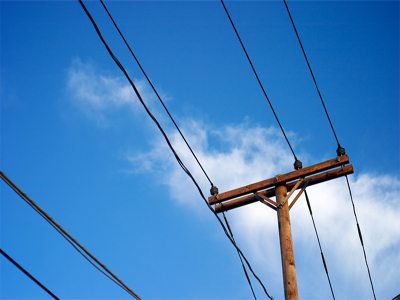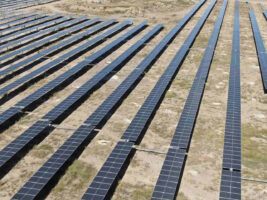South Australian environment minister Ian Hunter has named Australia’s outdated National Electricity Market as one of the biggest hurdles to the eastern states’ rapid transition to renewable energy generation, in a speech at an energy conference in Sydney on Friday.
“It’s clear the NEM was a great piece of market reform for the 90s, but it’s not the 90s any more,” Hunter told the Local Energy and Microgrids Conference, hosted by RenewEconomy in Sydney on Friday.
“We need to revisit those rules once more and try to get away from this straitjacket that the NEM is now.”
Hunter, whose state’s world-leading rooftop solar penetration and bountiful wind energy resource will the share of variable renewable energy generation capacity to 50 per cent this year, said that the transition – while a huge success for the SA economy – had been difficult and painful due to in-built network constraints.

“The troubles that we’re dealing with will come to visit you all,” Hunter said. “We are really a forerunner for what will happen in the rest of the country.
“You need to have a real grid; a grid that operates as a grid, not as a quasi-grid or a half-grid that’s bound up in red tape and rules that really don’t allow for free trade across borders of electricity,” he said.
One of the main grid reforms Hunter is lobbying for is the installation of new network interconnectors between the eastern Australian states.
“That’s where I think the pressure from the renewables (sector) needs to be,” he told the conference. “We need a new interconnector, a thicker, stronger interconnected to NSW… a second interconnector to Victoria,” he added, noting that this was something the current NEM rules didn’t allow.
“The challenge for our state, now, is how do we accelerate this transition and take advantage of the benefits of being a leader?
Building a “greater interconnector” between the states, Hunter argues, would mean SA could play greater part in delivering its world class renewables resources to all of the NEM: “And that is an opportunity we want to grasp,” he said.
“This takes into account the significant sunk infrastructure costs already in the grid. Why would we throw that away? Why wouldn’t try to make that work better? I think that’s the logical thing to do.
“So that greater interconnection is really going to be helpful I think, to give the time to the eastern states to go through this transition. It is difficult. It is painful,” he said.
An “educative account” of this, referred to by Hunter at the conference, is last November’s network outage, which was quickly blamed on the state’s high wind energy penetration, but was subsequently found to have been caused, not by renewables but by a faulty signal that caused the line linking South Australia to the rest of the grid to trip and then disconnect.
“What (this outage) shows us is that we are vulnerable,” he said. “To have a very efficient energy sector, you need to have great interconnection.
“You need to have a real grid; a grid that operates as a grid, not as a quasi-grid or a half-grid that’s bound up in red tape and rules that really don’t allow for free trade across borders of electricity.”










